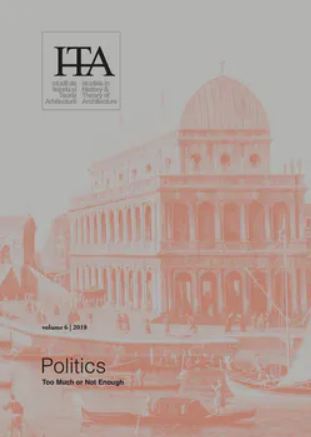Reverse-engineering Political Architecture. The House of the People and Its Hidden Social Effects
Reverse-engineering Political Architecture. The House of the People and Its Hidden Social Effects
Author(s): Celia Ghyka, Călin DanSubject(s): Architecture, Oral history, Recent History (1900 till today), History of Communism
Published by: Universitatea de Arhitectură şi Urbanism »Ion Mincu«
Keywords: political architecture; Foucault; governmentality; collective authorship; oral history; Romanian Communism;
Summary/Abstract: While focusing on the example of the House of the People in Bucharest, the article will look at the delicate balance between governance and the construction of cities in socialist Romania. A dual perspective on the edifice (from the top-down decision-making level and from the microlevel of the professionals directly involved in the construction) accounts for the communist authoritarian decisions upon the urban system and for the ways in which power and authority worked in the late seventies and eighties in Romania, but also for how such technologies of power proved to work with discontinuity, allowing for spontaneous, unexpected accumulations of individual territories of action.
Journal: sITA – studii de Istoria şi Teoria Arhitecturii
- Issue Year: 2018
- Issue No: 6
- Page Range: 108-125
- Page Count: 18
- Language: English

